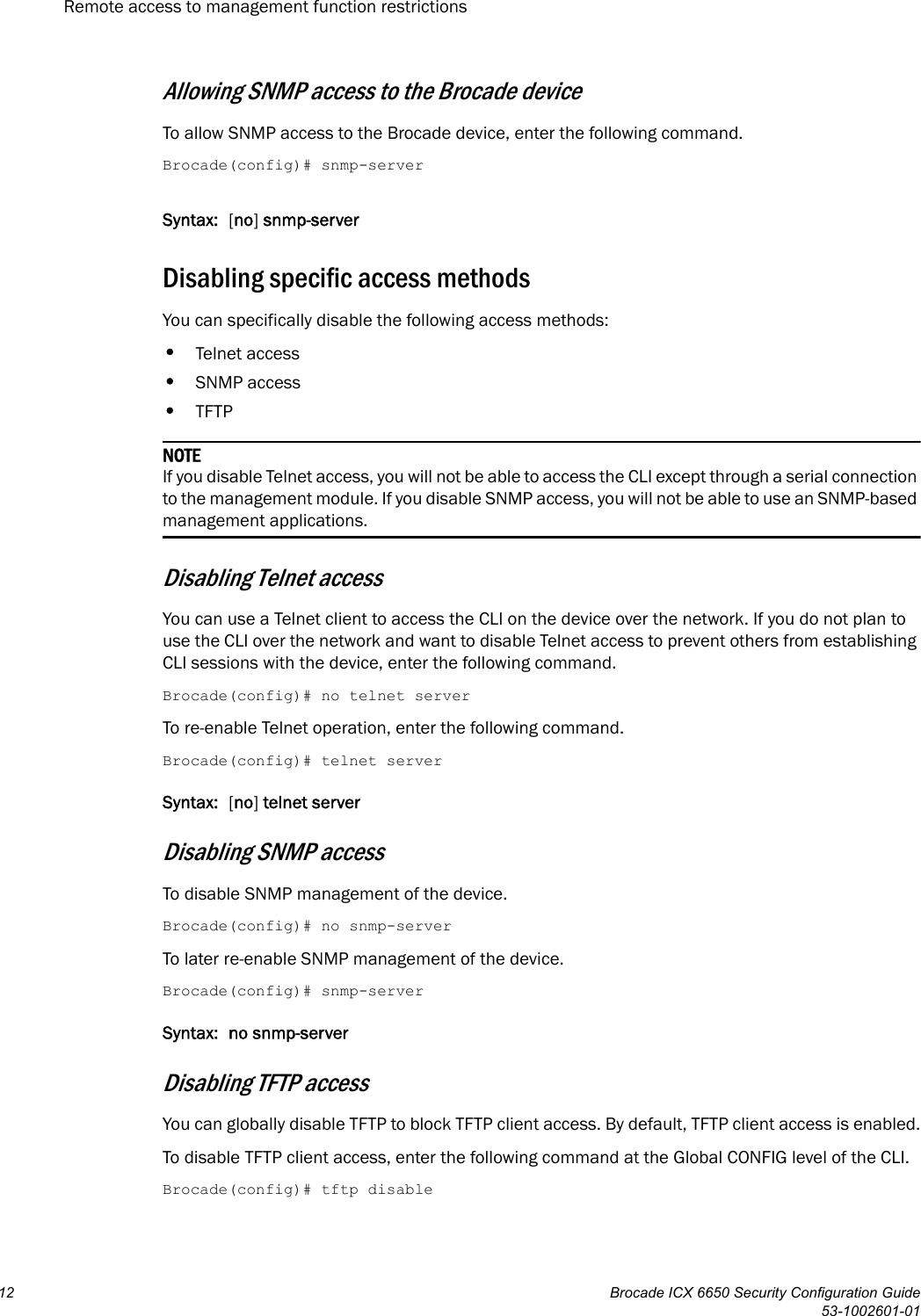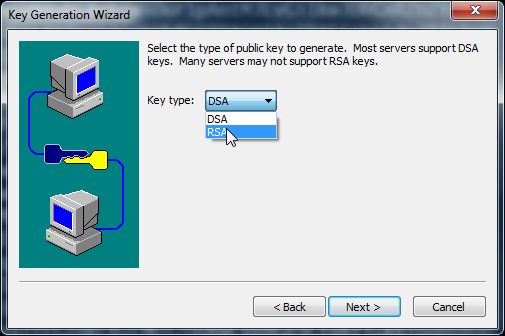Rsa And Dsa Key Generation Brocade
- Rsa Vs Dsa Key
- Rsa And Dsa Key Generation Brocade Code
- Rsa And Dsa Key Generation Brocade Stock
- Rsa And Dsa Keys
How do I generate ssh RSA keys under Linux operating systems?
You need to use the ssh-keygen command as follows to generate RSA keys (open terminal and type the following command):ssh-keygen -t rsa
ORssh-keygen
Sample outputs:
The SSH server on the ICX device uses this host DSA or RSA key, along with a dynamically generated server DSA or RSA key pair, to negotiate a session key and encryption method with the client trying to connect to it. While the SSH listener exists at all times, sessions cannot be started from clients until a host key is generated.
- Invented by Ron Rivest, Adi Shamir, and Leonard Adleman in 1977, RSA is an algorithm for public-key cryptography.RSA works on the basis of a public and private key. Your public key is used to encrypt data before it's sent to the server on which the certificate is located.
- DSA is faster for signature generation but slower for validation, slower when encrypting but faster when decrypting and security can be considered equivalent compared to an RSA key of equal key length. That's the punch line, now some justification.
- Party distributed RSA key generation that is k−1 private. In 2003, Straub Str03 partially improved Gilboa’s protocol by generating multi-prime RSA keys for two parties. In this thesis, we implement Gilboa’s protocol, which uses parts of the original protocol developed by Boneh and Franklin.
- Start the key generation program. MyLocalHost% ssh-keygen -t rsa Generating public/private rsa key pair. Where -t is the type of algorithm, one of rsa, dsa, or rsa1. Specify the path to the file that will hold the key. By default, the file name idrsa, which represents an RSA v2 key, appears in parentheses.
- Crypto key generate rsa. cryptokeygeneratersa,page2 Cisco IOS Security Command Reference: Commands A to C, Cisco IOS XE Release 3SE (Catalyst 3850 Switches).
The -t type option specifies the type of key to create. The possible values “rsa†or “dsa†for protocol version 2. The $HOME/.ssh stores the following two files:
- $HOME/.ssh/id_rsa – Your private RSA key
- $HOME/.ssh/id_rsa.pub – Your public RSA key
Please do not share keys file with anyone else. You can upload keys to remote server as follows:ssh-copy-id userName@server2.nixcraft.net.in
Finally, you can login to remote server as follows:ssh userName@server2.nixcraft.net.in
scp file.txt userName@server2.nixcraft.net.in:~/data2/
See also:
- Howto Linux / UNIX setup SSH with DSA public key authentication (password less login)
- sshpass: Login To SSH Server / Provide SSH Password Using A Shell Script
- keychain: Set Up Secure Passwordless SSH Access For Backup Scripts
ADVERTISEMENTS

Generate RSA keys with SSH by using PuTTYgen
One effective way of securing SSH access to your cloud server is to usea public-private key pair. This means that a public key is placed onthe server and a private key is placed on your local workstation.Using a key pair makes it impossible for someone to log in by using justa password, as long as you set up SSH to deny password-basedauthentication.
This article provides steps for generating RSA keys by using PuTTYgen onWindows for secure SSH authentication with OpenSSH.
Generate keys
In Windows, use PuTTYgen to generate your public and private keys.
- If needed, download PuTTYgen from the PuTTY download page.(PuTTYgen might have been installed previously with PuTTY or WinSCP.)
- Launch the program, and then click the Generate button.The program generates the keys for you.
- Enter a unique key passphrase in the Key passphrase andConfirm passphrase fields.For additional information about using passphrases,see Log in with a SSH Private Key on Windows.
- Save the public and private keys by clicking the Save public keyand Save private key buttons.
- From the Public key for pasting into OpenSSH authorized_keys filefield at the top of the window, copy all the text (starting with ssh-rsa)to your clipboard by pressing Ctrl-C.You need this key available on your clipboard to paste eitherinto the public key tool in the Control Panel or directly into theauthorized keys on your cloud server.
Use the key pair

You can use the RSA key pair in the following ways.
Specify your SSH key when creating a new cloud server
When you create a cloud server, you can assign a public key from the list of keys.If your key is not already in the list, you may add it, and then assign it.
Add a new public key to the list
- Under Advanced Options on the Create Server page, click Manage SSHKeys.
- Select public key for the cloud server from the SSH Keys listand click Add Public Key.
- Enter the key name, select the region, and paste the entire publickey into the Public Key field. Then click Add Public Key.
- Go back to the Create Server page, and confirm that your key is listedin the SSH Key list.

Assign a public key
- Under Advanced Options on the Create Server page, select the publickey you want to use from the SSH key drop-down menu.
- When you are done specifying the all the other details for the server,click Create Server.
Assign your SSH Key to an existing cloud server
Rsa Vs Dsa Key
To make use of your newly generated RSA key pair, you must tell PuTTY touse it when connecting to your cloud server.
To edit the file (or create it), run the following command on the cloud server:
Paste the text onto its own line in the file.
You must have the key available in your clipboard to paste it. The key and itsassociated text (the ssh-rsa identified at the start and the comment at the end)must be on one line in the file. If the text is word-wrapped onto multiple linesan error might occur when connecting.
If you created the authorized_keys file, change its permissionsafter you’re done editing it by running the following command:
Open PuTTY, and go to the SSH > Auth section.
Browse to the location of the key file, and load the private key.
Go to the Session page, and save the session. This saves the configurationso that PuTTY uses the key every time that you connect to your cloudserver.
After you save your session, your key is loaded automatically when youconnect to your server.
Related article
Experience what Rackspace has to offer.
Rsa And Dsa Key Generation Brocade Code
©2020 Rackspace US, Inc.
Rsa And Dsa Key Generation Brocade Stock
Rsa And Dsa Keys
Except where otherwise noted, content on this site is licensed under a Creative Commons Attribution-NonCommercial-NoDerivs 3.0 Unported License